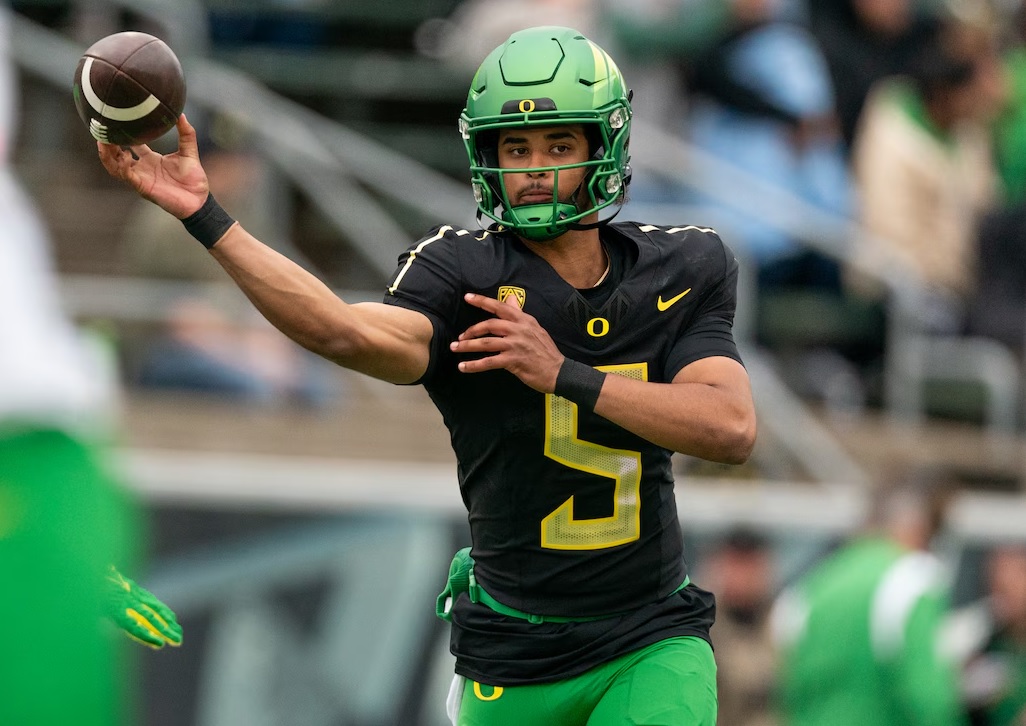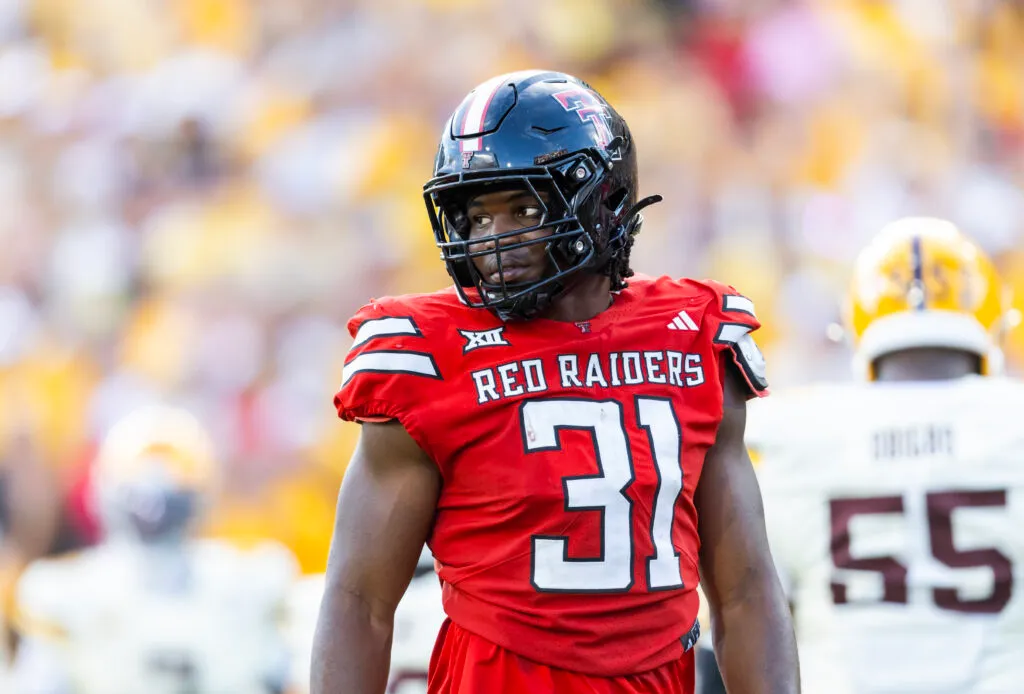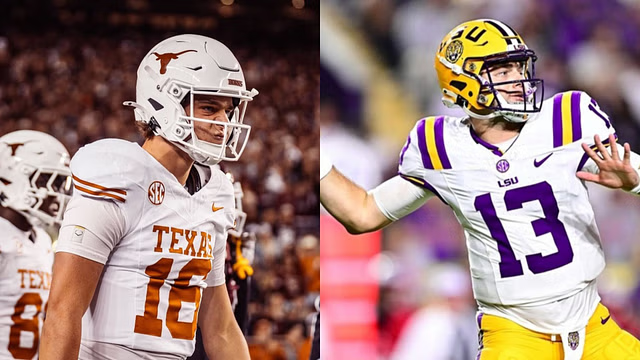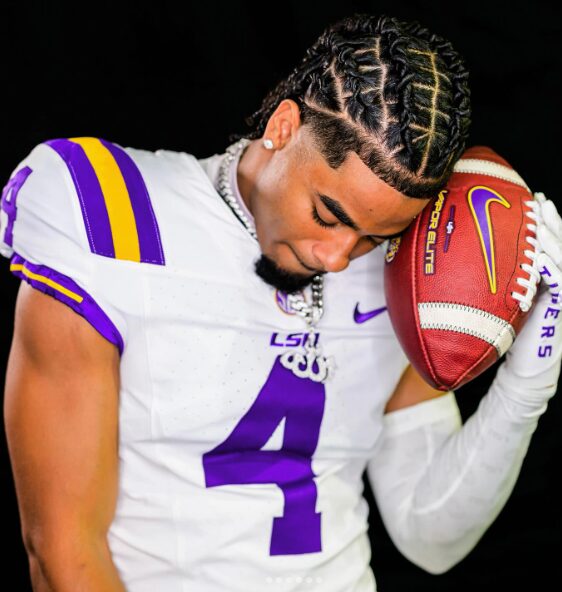By Charlie Campbell.
Send Charlie an e-mail here: [email protected]
Follow Charlie on Twitter @draftcampbell for updates.
This page was last updated April 21, 2013. Follow me @walterfootball for updates.
Position Review: Wide Receiver
Wide Receiver Class
Early-round talent: B
Mid-round: A-
Late-round: C+
Overall grade: B
2012 prospects vs 2013
Justin Blackmon > Cordarrelle Patterson
Michael Floyd > Tavon Austin
Kendall Wright > DeAndre Hopkins
A.J. Jenkins < Justin Hunter
Brian Quick < Keenan Allen
Stephen Hill > Robert Woods
Alshon Jeffery > Quinton Patton
Ryan Broyles > Terrance Williams
Overall, the 2013 NFL Draft’s group of wide receivers is not as good as last year’s class. Nine wide outs went in the first two rounds in the 2012 NFL Draft, and this year’s group may not hit that number. Five receivers went in the first 33 picks of the 2012 NFL Draft. Right now, less than week before the 2013 NFL Draft, only four receivers are projected to be first-rounders with the possibility of a fifth receiver being taken. That being said, this year’s receiver class has quality, depth and parity on the second day of the 2013 NFL Draft.
If the two classes were merged, Patterson and Austin would go behind Wright but ahead of Jenkins. Blackmon, Floyd and Wright were better prospects than either Patterson or Austin. Jenkins is at the point where things get interesting. Hunter, Allen and Woods are better prospects than Jenkins, but Allen and Woods could slip to the second round. Jenkins was a surprise late first-rounder in the 2012 NFL Draft, but did nothing as a rookie to justify that lofty draft slot. He looked like a reach at the time and confirmed that in his first year. Allen and Woods would go ahead of Jenkins in a merged group.
There is a drop off after Woods. Patton and Williams would go behind Broyles.
There are a few other second-day wide outs and mid-rounders who could turn into good players. That group includes Texas A&M’s Ryan Swope, Tennessee Tech’s Da’Rick Rogers, West Virginia’s Stedman Bailey and Oregon State’s Markus Wheaton. Other potential third-day picks to watch include Elon’s Aaron Mellette, South Carolina’s Ace Sanders, Oklahoma’s Kenny Stills and Washington State’s Marquess Wilson.
Safest Pick: DeAndre Hopkins, Clemson

Hopkins is the most polished and well-rounded receiver in the 2013 NFL Draft. He has decent size, speed, quickness, route-running and hands. Hopkins totaled 1,405 yards on 82 catches and 18 touchdowns this season, scoring in 12 of 13 games. He dominated LSU to lead Clemson to a last-minute comeback bowl win. Hopkins may never be a lead No. 1 receiver in the NFL, but he should turn into a solid starter and contributor.
Biggest Bust Potential: Cordarrelle Patterson, Tennessee

There is not doubt that Patterson has a rare combination of size and speed. However there are concerns about him translating to the NFL on and off the field. Some teams are concerned about his off the field activities and work ethic. They also have some concerns about his ability to pick up the NFL game.
Patterson is very raw having played only one season of big-time college football. He drops too many passes, and his route-running needs a lot of improvement. Patterson is an intriguing prospect, but his lack of polish could lead him to being a bust if he doesn’t work hard to improve his game.
Wide Receiver Rankings by Attributes
Separation:
NFL prototype: Calvin Johnson, Lions
- Cordarrelle Patterson
- Tavon Austin
- Keenan Allen
- DeAndre Hopkins
- Justin Hunter
- Robert Woods
- Terrance Williams
- Quinton Patton
Recap: A few wide receivers coaches told me that the ability to separate from coverage is the first trait they looked for while scouting draft prospects. Patterson is the best in this draft class at getting space from defensive backs. He does it with sheer speed and explosion out of his breaks, but retains the strength to fight them off. Patterson’s separation skills will get even better when he improves his route-running.
Austin is a close second at getting separation. He can burn defensive backs with his speed to get wide open running down the field. Austin has good separation skills, but is going to have issues with getting off jams at the line of scrimmage in the NFL.
Allen consistently gained separation via quickness and route-running. He is especially effective at getting open quickly in the short to intermediate part of the field on slants and crossing routes. Allen is also physical with the power to shove defensive backs away.
Hopkins does well at getting space from defensive backs. Not only does he beat man coverage, but he was very good at finding soft spots in zone coverage downfield to give his quarterback completions.
Hunter and Woods would be ranked higher before their injuries. Hunter really struggled to get space during the first half of the 2012 season, but he did better down the stretch. Woods was similar. He seemed to be missing speed throughout the year and that allowed defensive backs to run with him. Hunter and Woods could definitely be higher on this list a few years from now.
Williams disappointed with his separation skills at the Senior Bowl after a tremendous 2012 season. Patton did a nice job of getting open at the Senior Bowl, but he made a lot of contested catches in college.
Hands:
NFL prototype: Larry Fitzgerald, Cardinals
- Terrance Williams
- DeAndre Hopkins
- Keenan Allen
- Quinton Patton
- Tavon Austin
- Robert Woods
- Justin Hunter
- Cordarrelle Patterson
Recap: This is a nice crop of sure-handed receivers in the 2013 NFL Draft class. Williams didn’t measure out with large hands (8 3/4) at the Senior Bowl, but he has proven to be incredibly sure-handed over the past two seasons. A dropped pass was an extremely rare sight as the senior snared 97 receptions in 2012. Williams made tough catches in the middle of the field and also produced some highlight-reel grabs downfield. He was extremely reliable for Nick Florence and Robert Griffin III.
Hopkins has excellent hands. He made plenty of tough catches in traffic and along the sideline for Clemson. His plus concentration lets him do a nice job of tracking the ball on deep passes. Hopkins dropped very few of Tajh Boyd’s passes in 2012.
Allen has great hands, excellent concentration and good body control to maintain possession of difficult catches. His brother, quarterback Zach Maynard, threw a lot of bad balls, but Allen was able to adjust to make receptions. Allen’s size and strength makes him more reliable at holding onto the ball in the short to intermediate part of the field. His hands are very good entering the NFL.
Patton, Austin and Woods all have good hands. Of the three, I think Patton’s are the most reliable, plus he has the advantage of physically larger hands (9 1/8). Austin and Woods are sure-handed, too. None of this trio should have issues with dropped passes in the NFL.
Hunter is typically sure-handed, but does have an occasional drop. He looked rusty in the beginning of the season after missing almost all of 2011 with an injury. Hunter was much better during the second half of the 2012 season. I think Hunter will be a reliable receiver as pro.
One of the aspects of Patterson’s game that he must improve are his hands. The junior had some ugly and costly drops during the 2012 season. Patterson has the capacity to improve his hands with better concentration. That would make a difference. 2012 was his first year in major college football, and he needed more time getting used to the velocity of the ball. Patterson also had a big-armed quarterback, Tyler Bray, throwing him some fastballs. Patterson definitely needs to improve his hands in the NFL.
Deep Speed:
NFL prototype: Mike Wallace, Steelers
- Tavon Austin
- Cordarrelle Patterson
- Justin Hunter
- DeAndre Hopkins
- Robert Woods
- Keenan Allen
- Terrance Williams
- Quinton Patton
Recap: There a number of receivers in this group who have the ability to stretch the field vertically. Austin is the most explosive receiver available and is a threat to burn double coverage on any route. He has the speed to beat double-teams over the top and is a threat to score on any reception.
Patterson is only slightly behind Austin. When Patterson improves his other skills, like his route-running, he could become the best deep receiver from this draft class. Patterson is explosive out of his release and while making cuts. He also has a second gear in the open field to pull away from the defenders.
Hunter was a deep threat receiver before his 2011 knee injury. Woods was, too, before his ankle injury the same year. Hunter was showing signs of regaining his explosiveness toward the end of the 2012 season. He continued to display that with a sparkling 40 time at the Combine. Hunter’s second gear and straight-line speed could allow him to stretch the field in the NFL.
Hopkins made a habit of burning defenses deep throughout the 2012 season. He doesn’t have the top-end speed or explosiveness of Austin or Patterson, but Hopkins is capable of burning cornerbacks running go routes straight down the field.
Allen and Williams both have football speed rather than timed speed in Combine testing. Allen didn’t get the opportunity to show it much in 2012, but looking back at 2011, one can see that he has the ability to get vertical. Williams was a deep threat this year, but he disappointed at the Senior Bowl and didn’t seem to be nearly as fast against the better defensive backs.
Conversely, Patton showed some ability to make plays downfield in Mobile. He won’t be a true speed receiver in the NFL, but he could make some plays downfield from time to time.
Route-Running:
NFL prototype: Reggie Wayne, Colts
- Keenan Allen
- DeAndre Hopkins
- Tavon Austin
- Quinton Patton
- Terrance Williams
- Justin Hunter
- Robert Woods
- Cordarrelle Patterson
Recap: Route-running is a critical part of gaining separation in the NFL. Receivers who get sloppy in their routes have a hard time getting open. Extra steps allow defensive backs to maintain coverage or more time to recover.
Allen is a superb route-runner. He is sudden in and out of his breaks with quickness. Allen does well in all levels of the field. The junior only had 61 receptions in 2012, but that was because of poor quarterback play. He got open regularly and just didn’t have the ball delivered to him.
Hopkins really improved his route-running from his sophomore to his junior season. That helped him to take over in 2012 as the No. 1 receiver over the talented Sammy Watkins. Hopkins has good feet and doesn’t waste steps. He uses quickness to consistently get open.
Austin is a quality route-runner. He could still improve on it in the NFL, but he looks ready to step into a slot receiver role and have an immediate impact. Patton was a strong route-runner in college and displayed that at the Senior Bowl. Williams also runs routes well, which allowed him to beat frequent double-teams during his senior season.
Hunter and Woods have a good start at route-running since they were groomed in a West Coast offense in college. They both had injury issues this year that kept them from being sudden and explosive in and out of their breaks. Woods’ route-running didn’t seem as strong in 2012 compared to 2011. Hunter’s route-running will improve as he gets further away from his 2011 knee injury. Woods ankle appears to be healthy, as he showed excellent route-running ability at the Combine.
Patterson needs to improve his route-running. He can get sloppy at times and hasn’t mastered the route tree yet. Patterson is just very raw having only played one season at Tennessee. His route-running will be a high priority for his receivers coach.
Yards After the Catch:
NFL prototype: Julio Jones, Falcons
- Cordarrelle Patterson
- Tavon Austin
- Keenan Allen
- Terrance Williams
- DeAndre Hopkins
- Justin Hunter
- Robert Woods
- Quinton Patton
Recap: The ability to turn a short reception into a big gain can make a receiver elite. There is no doubt that Patterson is the best yards-after-the-catch receiver in the 2013 NFL Draft. He is electric in the open field. Patterson has the speed and explosion to run by defenders while also having serious elusiveness. The 6-foot-2, 216-pounder is tough for defensive backs to bring down. Patterson’s run-after-the-catch ability should get better at the next level after he spends some time developing with NFL coaches.
It was a frequent sight during the 2012 season to see Austin running away from a defense for a long touchdown. He did that as a running back and a wide receiver. Austin’s speed is such a mismatch that defenders constantly take poor angles and get burned by the play-maker. Even on short catches, Austin would regularly juke a safety to break free down the field. Any time he touches the ball, he is a threat to score. Austin doesn’t have the size to run through tackles, thus Patterson is rated first.
A lot of Williams’ 1,832 yards in 2012 came after the catch. He showed quickness with the ability to immediately get vertical. Williams also has some size to give defenders a challenge in wrestling him to the ground.
Allen is very good with the ball in his hands. He is quick to rip off yards in chunks while also being physical. His strength allows him to break tackles from defensive backs to get more yards in the open field.
Hopkins was a dangerous yards-after-the-catch receiver in 2012. He broke a number of long touchdown receptions.
Hunter didn’t get the yards after the catch in 2012 that he was producing before his 2011 knee injury, but he wasn’t terrible. Hunter was making more plays late in the season. Woods was excellent at ripping off yards after the catch as a sophomore in 2011, but that ability was hurt as a junior from his ankle injury.
Patton was making some tough catches and pilled up yards after the catch in 2012, but he didn’t seems as strong in this category during the Senior Bowl.
Red Zone:
NFL prototype: Calvin Johnson, Lions
- DeAndre Hopkins
- Cordarrelle Patterson
- Justin Hunter
- Robert Woods
- Quinton Patton
- Terrance Williams
- Keenan Allen
- Tavon Austin
Recap: This was a tough category to rank because so many of the receivers were excellent point producers in college. Hopkins led them all with 18 touchdowns last year. He was tremendous in the red zone with his ability to make catches in traffic and get open in the condensed field. Hopkins scored in 12 of 13 games. The one game he didn’t score in was a blowout of a small school.
Even though the other receivers caught more touchdowns, I think Patterson will be a better red-zone weapon in the NFL because of his speed, size and versatility. He has the leaping ability and strength to win on fade passes, but also can run the ball. Patterson had three rushing touchdowns last year.
One of the reasons Patterson didn’t receive as many red-zone targets in 2012 was because the 6-foot-4 Hunter was the go-to target along with other receiving weapons. Hunter used his size to record nine scores in 2012. He has leaping ability and the frame to shield the ball from defenders. Hunter should be a good red-zone weapon in the NFL.
Woods recorded 11 touchdowns for USC in 2012 despite it being quite a down year for him. He had 15 touchdowns in 2011. Woods scored on some long receptions as a sophomore in 2011, but his junior year showed his ability to get points in the condensed field. He just has a nose for the end zone.
Patton and Williams produced well near the goal line in 2012. Patton used his well-rounded game and attacking style to log 13 touchdowns. Williams caught 12 scores with some being nice red-zone plays on which he went over defensive backs to make the score.
I think that Allen will be a better red-zone producer in the NFL, but he had only six touchdowns in each of the past two seasons, so there isn’t a track record of him being a big producer inside the 20.
Austin had 18 total touchdowns in 2012, so it might be a surprise to see him last, but his scores came from long distances. He won’t be a red-zone threat as a running back in the NF: and his touchdown receptions will continue to come from big plays down the field.
Contested Catches:
NFL prototype: A.J. Green, Bengals
- Keenan Allen
- Cordarrelle Patterson
- Justin Hunter
- DeAndre Hopkins
- Terrance Williams
- Quinton Patton
- Robert Woods
- Tavon Austin
Recap: Throwing windows in the NFL are very small, and receivers have to be trusted to out battle defensive backs for the ball. Lacking the ability to win contested catches results in more interceptions.
Allen is the receiver most likely to make a reception while a defender is playing the ball as well. He is very strong and attacks the ball. California’s subpar quarterback play left Allen with more contested receptions than he should have had, but it allowed him to show NFL scouts that he’ll be a trustworthy receiver in the NFL.
Patterson has the strength and size to beat defensive backs. His superb athleticism allows him to make highlight-reel receptions over defenders. He should win his contested catches in the NFL assuming he competes as aggressively as the defenders.
While Hunter seemed to be missing his top-flight speed in 2012, he used his size to beat defenders. Tyler Bray had some success by throwing passes up high for Hunter, and the tall receiver came down with the ball over defenders. He should be able to continue doing that in the NFL.
Even though Hopkins (6-1, 210) isn’t the biggest of receivers, he is reliable at making receptions with defenders close by. Hopkins really stood out late in the season with his ability to out battle defenders for the ball.
Williams would have been higher on this list if it had been compiled before the Senior Bowl. He was money on contested throws throughout 2012. Maybe Williams was playing with an injury in Mobile, but he didn’t look the same. Williams didn’t compete for the ball like he did during the fall. Williams was also underwhelming at the Combine.
Patton battles for the ball and will be a good receiver at winning contested catches in the NFL. Woods isn’t a big receiver, but he can make receptions on balls thrown up for grabs. Woods really attacks the football.
Austin is a small and light receiver who could struggle to fight off defensive backs in the NFL. He especially will get pushed around and out-muscled for position on passes up for grabs.
Blocking:
NFL prototype: Reggie Wayne, Colts
- Keenan Allen
- Justin Hunter
- Quinton Patton
- Terrance Williams
- Robert Woods
- DeAndre Hopkins
- Cordarrelle Patterson
- Tavon Austin
Recap: Coaches love receivers who give a big effort as blockers. Almost every long touchdown run in the NFL has a receiver making a block to prevent the ball-carrier from being chased down. Some receivers are more aggressive about it. They seek out defenders to hit blocks when a fellow wide out catches a pass. There are also receivers who are lazy when it comes to blocking. Coaches hate it, which hurts a player’s ability to be on the field in the red zone.
Allen is the best blocker in the 2013 NFL Draft. He is a tough blocker who can push defenders around and never hesitates to get physical. Hunter’s a good blocker, too. He did well doing the dirty work as the Z (flanker) receiver in 2012. That wide out is called on to do more blocking.
Patton, Williams, Woods and Hopkins were all decent blockers this year. All could use work for the NFL, but they have good starting points.
Patterson has the potential to be a good blocker, but he needs work. Austin can display a willing attitude, but is too undersized.
|
|
NFL Picks - Jan. 13
2026 NFL Mock Draft - Jan. 7
NFL Power Rankings - Jan. 5
Fantasy Football Rankings - Sept. 1




